
© SuK 2012-24
What is Cable Wake Boarding?
This sport born from a combination of Wake Boarding and Cable Ski-ing is known as Cable
Wakeboarding, even though there is no wake.
The Cable part of the name comes from the over-head cable which is used to pull riders around
a lake. These cables are much higher above the water than the tow you get from a Wakeboard
boat and therefore it is easier to be pulled up and out of the water and perform greater air
tricks, using both terrain (i.e. sliders and kickers) or a technique similar to that used by
kiteboarders to get massive air.
What systems are available?
Multi-Tower
These are the original Cable Ski systems, which require a large body of water. They have 4,
5 or 6 towers on which the cable is set to go either clockwise or anti-clockwise.
The rider is pulled off a dock with no slowing of the cable (hard start) and run around the
system at a set speed, with no adjustment for the individual rider’s ability. There can be up to
eight riders on the system at one time. The Cable has high line tension and produces good
‘pop’. It is suitable for doing both terrain and air-style tricks, but consideration is needed for
rider either side before performing these.
If there’s a failed trick attempt there is a long period before the next attempt due to the
distance required to swim and walk back to the dock for another start. If a trick attempt is
successful there is still a long period before the next trick on the same bit of terrain, because of
the distance around the park.
The minimum operating staff required to safely run a Multi-tower system is four, whether there
is one rider or eight riders on the system, so there is no scaling available for running such a
system in the low season. The initial investment cost is also high with limited or no scalability.
Also these are very expensive to install and maintain and therefore not ideally suited to
installations for private use.
Two-Tower
Also known as In-Line cable systems; there are three variations of this system on the market.
What they have in common is that they require a small body of water, have only two towers, are
scalable, affordable and easy to use. The rider can choose to do a water- or dock-start and
choose if they want to go clockwise or anti-clockwise. The controller can set the speed for the
individual riders dependant on their skill levels or riding styles. If the rider attempts a trick and
looks like he will fail, an attentive controller can slow the cable, thereby reducing chance
of injury. If a trick attempt is unsuccessful the rider is picked up quickly allowing
multiple attempts back-to-back which makes for fast progression. The advantage to the
owner is that the minimum operating staff to run the cable is one, therefore making it
possible to run into the low season.
Portable Two-Tower
This system can be set up on water, snow, sand or any location you want to put a temporary
installation. It is suitable for terrain riding, but cannot safely be tensioned enough for air-
style tricks. This an ideal system if you are running demonstration events or have multiple
locations you want to use in different seasons.
Trainer Two-Tower
This system is the most common two-tower system currently available. It was developed as a
training tool for Multi-Tower Systems, but was also found to be an affordable option for people
to set up private installations on smaller bodies of water. As the numbers of these increased the
average riders’ riding ability also increased. This meant that there is now a demand for a better
two-tower system, hence the development of the Performance Two-tower systems.
Performance Two-Tower
Designed with the widest range of use possible in mind - this system had to be easy to
use, yet match or exceed the performance of a Multi-Tower system. This system gives
you all of the advantages of the Multi-tower and Two-towers system. Cable height and
counter-weighted tension creates incredible lift, corners are easy to navigate due to the
optimised control systems and the best of these systems have built-in safety features not
available in any of the other systems.
This system is still very affordable for your backyard or ideal for that perfect
compliment to any water-sports complex, kite school, retail shopping
mall or housing development.




Cable Boarding
Even though the thrills are similar to Wake Boarding, Kite Boarding, Snow
Boarding, Skate Boarding and Mountain Boarding - Cable Boarding is much
easier and safer to learn and can safely be enjoyed by the whole family
on a Topline Cable System.





























